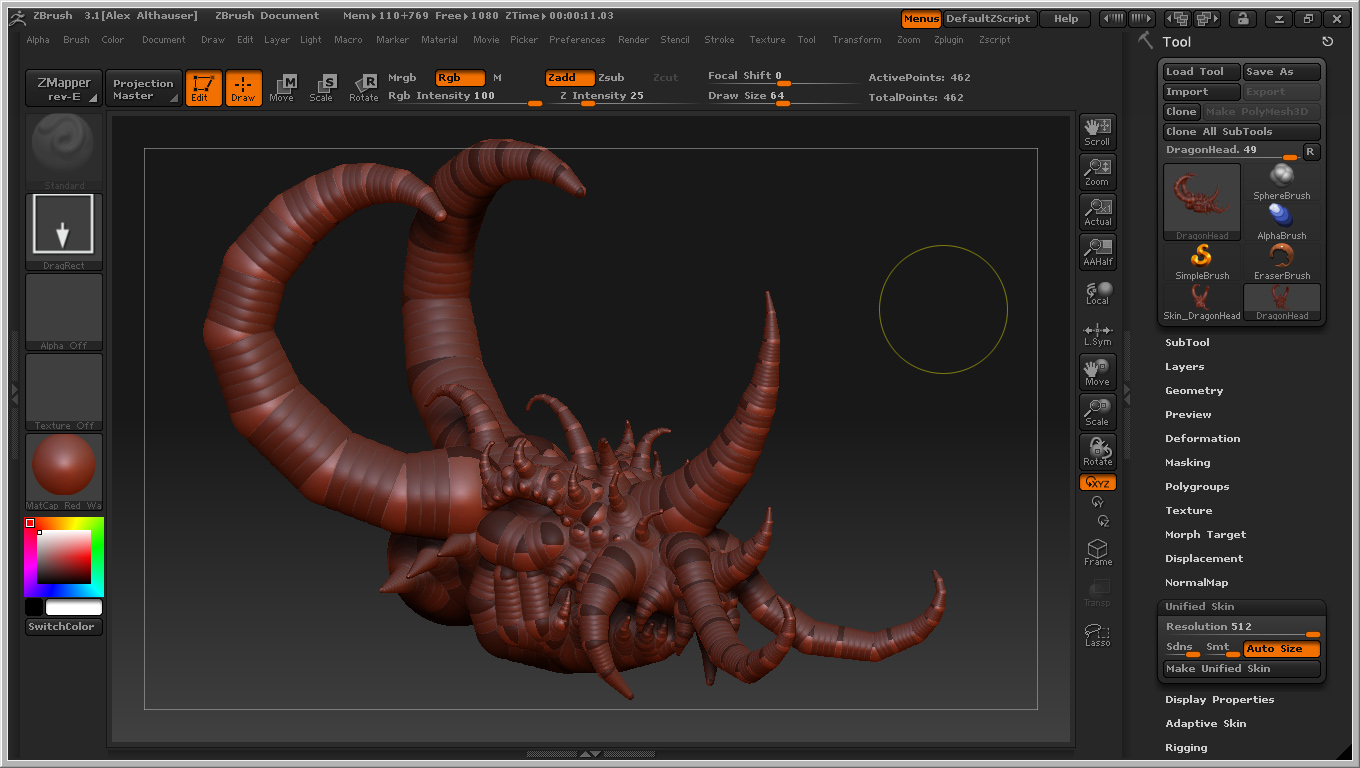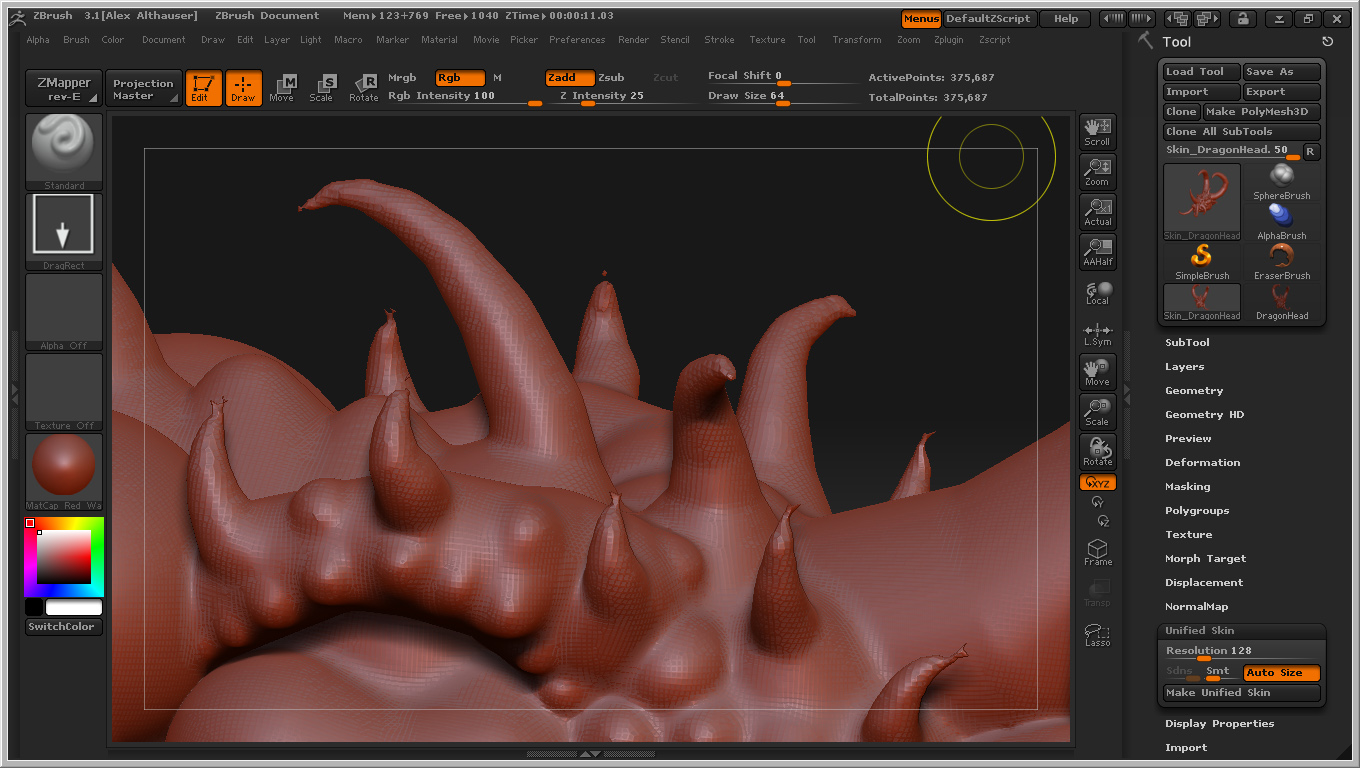I made this model with zspheres. Then I attempted to make a unified skin with the highest resolution settings. I also tried various smoothing setting. I still seem to get these artifacts. Does anybody know of a fix for this?

Attachments

I made this model with zspheres. Then I attempted to make a unified skin with the highest resolution settings. I also tried various smoothing setting. I still seem to get these artifacts. Does anybody know of a fix for this?


Have you tried hitting those tips with a very small smooth brush?
Yeah I did, they’re really annoying. Also tried hiding parts of the mesh and deleting them, but it screws up the mesh and causes holes. I think I’ll just have to take it into another 3d modeling app and fix it there.
This happens when a ZSphere is too small relative to the largest ZSphere. If you inflate the problem areas a bit, that will fix the problem. You can always sculpt them thin again. Heck, you can even use the SnakeHook brush (in the Brush palette; not the one in the Tool palette) to get the effect you’re going after without having to do so much with ZSpheres.
Ahhh that makes some sort of sense. Any chance that issue will be fixed, or is it not on the list of important problems?
It’s not an “issue”. It’s simply how Unified Skins work. Unified skinning is not meant to create a detailed mesh. It’s meant to create a simple base mesh with uniform polygon distribution throughout. You then use that base as a starting point, which is why I mentioned things like the SnakeHook brush for the effects you’re trying to achieve.
If you want to have details created by small ZSpheres, you need to have smaller ZSpheres throughout the figure. The larger any ZSphere gets, the larger all of them must be in order to be fully skinned.
I was just thinking how great it would be to lay out a fully detailed mesh this way. I assumed that a function such as this unified-skin should work at a variable scale. My mistake. I do not fully understand how or why something like this small error would happen. As I don’t understand the intricacies of the algorithms and the math that is required to perform such calculations, I do not see the difference between it being a problem and being a necessary evil. Thanks for the heads up.:o
I have to agree with this even though many people probably don’t use this function or even understand how powerful it is for blocking out shapes. in my experience it works descent but finger horns pretty much any appendage you can think of it tends to produce the above results i know i would be one person that would be glad if this was changed to be more accurate with out the shooting vertexes and the degraded forms you get on something like a finger or a toe like we have now in this present release… it really is powerful for main shapes but it has its weaknesses also… but you cant beat it for blocking out main forms that have nice unified topology…
really this seems to be closest thing to an armature that at we have right now…